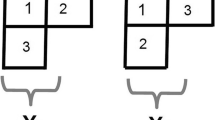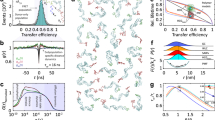Abstract
WE have formulated a structure for the nucleic acids which is compatible with the main features of the X-ray diagram and with the general principles of molecular structure, and which accounts satisfactorily for some of the chemical properties of the substances. The structure involves three intertwined helical polynucleotide chains. Each chain, which is formed by phosphate di-ester groups and linking β-D-ribofuranose or β-D-deoxyribofuranose residues with 3′, 5′ linkages, has approximately twenty-four nucleotide residues in seven turns of the helix. The helixes have the sense of a right-handed screw. The phosphate groups are closely packed about the axis of the molecule, with the pentose residues surrounding them, and the purine and pyrimidine groups projecting radially, their planes being approximately perpendicular to the molecular axis. The operation that converts one residue to the next residue in the polynucleotide chain is rotation by about 105° and translation by 3.4 A.
This is a preview of subscription content, access via your institution
Access options
Subscribe to this journal
Receive 51 print issues and online access
$199.00 per year
only $3.90 per issue
Buy this article
- Purchase on SpringerLink
- Instant access to full article PDF
Prices may be subject to local taxes which are calculated during checkout
Similar content being viewed by others
Author information
Authors and Affiliations
Rights and permissions
About this article
Cite this article
PAULING, L., COREY, R. Structure of the Nucleic Acids. Nature 171, 346 (1953). https://doi.org/10.1038/171346a0
Issue Date:
DOI: https://doi.org/10.1038/171346a0
This article is cited by
-
Raymond Gosling: the man who crystallized genes
Genome Biology (2013)
-
Molecular structure of nucleic acids
Resonance (2004)
-
DNH deoxyribonucleohelicates: self assembly of oligonucleosidic double-helical metal complexes
Nature (1990)
-
Molecular Structure of Nucleic Acids: A Structure for Deoxyribose Nucleic Acid (Reprinted from Nature, April 25, 1953)
Nature (1969)
-
Adsorption of DNA components on the mercury electrode
Experientia (1965)



